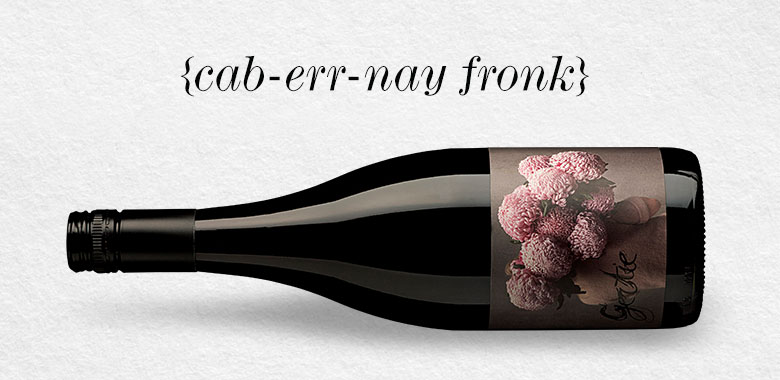
Wine
What is Cabernet Franc?
If you’re after a lighter, fresher red wine, look no further than Cabernet Franc, a mysterious parent grape of the more famous Cabernet Sauvignon variety.
So, what is Cabernet Franc? Where does Cabernet Franc come from? What does Cabernet Franc taste like? And, where in Australia does Cabernet Franc grow?
Settle in as we discuss all of these important questions, and more.
Shop Cabernet Franc
AN INFOGRAPHIC GUIDE TO CABERNET FRANC
Cabernet Franc pairs with tomato-based dishes to match the higher acidity.
It can be cellared for up to 10 years.
Cabernet Franc has a mid-weight profile.
HOW DO YOU PRONOUCE CABERNET FRANC?
The pronunciation of Cabernet Franc is cab-ber-nay fronk; cab-ber-nay as in Cabernet Sauvignon, and fronk as in frank but with an ‘o’.
WHERE IS CABERNET FRANC FROM?
The spiritual homes of Cabernet Franc are the French regions of Bordeaux in the south west and the inland area of the Loire Valley. While these regions make some of the highest quality Cabernet Franc in the world, the styles are quite different.
The more expensive, and you could argue more famous (in terms of historical fame), are the Cabernet Franc wines from Bordeaux. There it’s usually blended with other reds such as Cabernet Sauvignon and Merlot. On the right bank is where it shines, and features heavily in the blended wines from regions such as Pomerol and Saint-Émilion.
The Bordeaux style of Cabernet Franc highlights the grape’s natural tannins and the wines can look like lighter bodied Cabernet Sauvignon. While in the Loire, the wines highlight the grape’s natural acidity, and in regions such as Chinon and Saumur, the style is lighter and full of fruit and spice.
CABERNET FRANC IN AUSTRALIA
While Cabernet Franc in Australia has historically been used in blends, with the move towards lighter, fresher style red wines, you may have started to see more straight examples.
The styles made in Australia mirror what you can find in France. There are bigger muscular wines that showcase the tannins, a la Bordeaux, as well as fresh, lighter-bodied styles that mirror those from the Loire Valley.
Cabernet Franc prefers a cooler climate, however, it makes sense that it thrives in regions that do Cabernet Sauvignon well. Look out for examples from Coonawarra, Yarra Valley, Adelaide Hills, Orange and Margaret River.
WHAT DOES CABERNET FRANC TASTE LIKE?
Cabernet Franc could be compared to a lighter version of Cabernet Sauvignon as it shares many of the same characters.
Wines can show a range of currant notes from dark black to crunchy redcurrant. It is known for having an herbaceous edge, and this can come across as tobacco leaf, bay leaf or black tea, and tends to show notes of graphite and wood smoke.
It has lower tannins than Cabernet Sauvignon and some of the fresher styles can show the spice and aromatics (Campari/red liquorice) of winemaking techniques like carbonic maceration and whole bunch fermentation.
WHAT IS THE DIFFERENCE BETWEEN CABERNET SAUVIGNON AND CABERNET FRANC?
Cabernet Franc is not the same as Cabernet Sauvignon – they are different grape varieties, but some do share similar characters. Cabernet Sauvignon is fuller-bodied, and has considerably firmer and deeper tannins.
CAN YOU CELLAR CABERNET FRANC?
Cabernet Sauvignon has the ability be cellared for 10 or more years, Cabernet Franc can generally be enjoyed closer to release, however the richer styles still cellar for up to a decade.
WHAT ARE BEST FOOD PAIRINGS FOR CABERNET FRANC?
The bigger Cabernet Franc wines have a synergy with lamb and beef dishes and even roasted eggplant dishes. The lighter, fresher Cabernet Franc styles pair with a wide range of dishes from rabbit and duck, to tuna and salmon, and many semi-hard cheeses.
For a quick look at what pairs with Cabernet Franc check out these tasty dishes and recipes.
There you have it – a brief rundown on Cabernet Franc, one of the world’s most often confused reds. You can also learn more about some of Australia’s other great red wine varieties with our Shiraz and Cabernet.